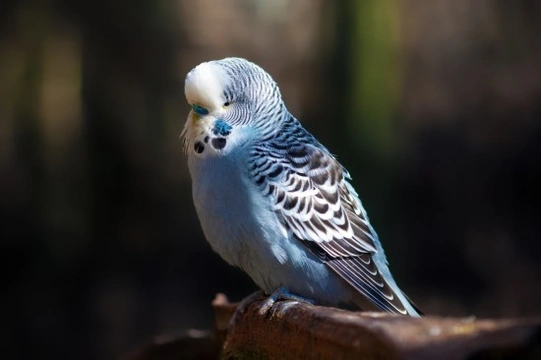
Common Illnesses in Budgies: Signs and Treatments Guide
Budgies, those lively and affectionate little companions, can sometimes hide illnesses until symptoms become serious. Early recognition of common health issues is crucial for timely veterinary care and a good recovery. This comprehensive guide covers typical illnesses affecting budgies, what signs to watch for, and how to manage each condition with care and responsibility.
1. Tumours in Budgies: Types and Treatments
Like many creatures, budgies can develop tumours, which may be benign or malignant. Budgies are particularly prone to lymphomas and lipomas—fatty tumours associated with overweight or older birds. These lipomas often occur near reproductive organs or kidneys and can pressure the sciatic nerve, causing leg lameness.
Fibromas sometimes appear on buds' wings and require surgical removal; in severe cases, amputation may be necessary. Budgies can also suffer from testicular cancer, indicated by a purple-brown discoloration of the cere above the beak. Early diagnosis can allow treatment with the drug luprin, which may reduce the tumour and facilitate recovery.
2. Nutritional Deficiencies and Their Impact
Diets predominantly consisting of seeds, which are often high in fat and low in essential vitamins and minerals, can lead to deficiencies in budgies. Vitamins A and D, along with calcium, are most commonly deficient and can cause respiratory problems, weak bones, poor feather quality, and reproductive issues.
Offering sprouted seeds is a great way to enhance nutrition, as the germination process reduces fat content while increasing the availability of beneficial nutrients. For calcium, vital for nerve function, eggshell formation, and other cellular functions, supplementation with a liquid calcium product in the drinking water is recommended, especially for birds that lay eggs frequently.
3. Giardia Parasite: Symptoms and Prevention
Giardia is a protozoal parasite living in contaminated water and the intestinal tract of budgies. It often causes itching, feather pulling, and pain, notably around the flank and legs. Behaviour such as licking non-food items (pica), foul-smelling diarrhoea with mucus, anorexia, weight loss, lethargy, and depression can also occur.
Treatment involves anti-protozoal medications prescribed by a vet. To prevent reinfection, provide water via a dispenser to avoid contamination by droppings. Additionally, oregano in the diet may help due to its natural anti-microbial properties, which can aid in controlling giardia.
4. Gout in Budgies: Causes and Care
Though commonly associated with humans, gout—urate crystal deposition in organs and joints—can affect budgies. It is linked to high protein intake, calcium imbalance, and exposure to harmful chemicals or pathogens in drinking water affecting kidney function.
Providing clean, filtered water is the first step in treatment. Your vet may suggest medications or dietary changes. Some natural remedies, like Lily of the Desert Aloe added to soft foods, have shown supportive benefits and may be discussed with your vet for suitability.
5. Reproductive Problems and Egg-laying Concerns
Budgies can experience reproductive problems including excessive egg-laying, which can lead to calcium deficiencies. Removing males or nesting boxes to prevent laying causes stress and should be avoided. Allowing females to incubate their eggs gives their bodies time to recover.
Egg binding is a serious condition in which a bird cannot lay an egg. Signs include swelling near the vent, lethargy, loss of appetite, or general unwellness. Immediate veterinary attention is crucial to save the bird’s life.
6. Additional Common Illnesses in Budgies
Common budgie illnesses also include respiratory infections characterised by laboured breathing, nasal discharge, sneezing, and tail bobbing. Such infections may be bacterial or viral and require prompt veterinary care.
Psittacosis (parrot fever) is a notable bacterial disease causing swollen eyelids, feather loss around the eyes, depression, weight loss, and respiratory difficulties. It is contagious and requires urgent veterinarian treatment.
Behavioural problems such as feather plucking often stem from stress or boredom and necessitate enrichment and medical evaluation to rule out parasites or infections.
Bumblefoot presents as swollen, reddened, or ulcerated feet causing limping. It usually results from poor hygiene, unsuitable perches, nutritional deficiencies, or obesity. Veterinary care and environmental improvements help manage this.
7. Maintaining Budgie Health: Tips for Owners
Regular observation of your budgie’s behaviour, droppings, and appearance aids early illness detection. Providing a varied, balanced diet rich in vitamins, minerals, and fresh produce supports overall health. Clean cage conditions and ample stimulation prevent many issues.
Have your budgie examined by a vet promptly at any signs of illness. Responsible bird ownership includes proactive health care and empathetic attention to behavioural changes.
8. Where to Find Budgerigars for Sale Responsibly
If you are considering adding a budgerigar to your family, seek reputable breeders who prioritise health and welfare over profit. Ethical breeding ensures happier, healthier birds with fewer inherited diseases. Avoid impulsive purchases and research breeders thoroughly.
Conclusion
Budgies may be small, but their health needs require attentive care. Recognising common diseases early and taking swift action can greatly improve outcomes and longevity. Balanced nutrition, clean habitat, enrichment, and routine veterinary care are the pillars of responsible budgie ownership. Monitoring behavioural and physical changes daily helps keep these charming birds thriving.



